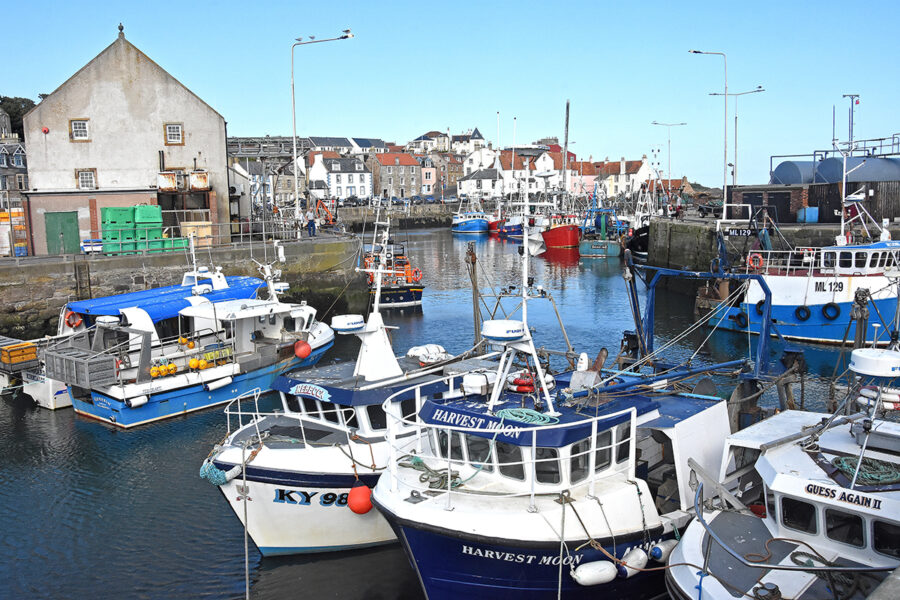Daily shellfish activity at Pittenweem, which is experiencing one of its best years on record, is portrayed in this selection of photographs taken in a 16-hour period by David Linkie towards the end of August, when the local fleet of prawn trawlers were following their usual practice of leaving harbour in the early evening and returning shortly after dawn.
Above: Pittenweem harbour is home to a mixed fleet of locally-owned boats…
With nearly 30 boats fishing from Pittenweem on a daily basis, the East Neuk of Fife harbour is home to the biggest inshore fleet in Scotland. Added significance is given to this achievement by the fact that nearly all the catches landed at Pittenweem are caught within 20-30 miles of the harbour.
Although prawn trawlers account for more than half of the local fleet, Pittenweem is also home to an equally industrious fleet of creel boats.
Catches of prawns from the local grounds have been significantly more consistent throughout this year, rather than subject to the more customary seasonal trends. In tandem with a generally higher price structure, this is one of the factors that are contributing to Pittenweem being well on course to achieve a record year in terms of catch value of over £4m.
Healthy landings of lobsters and brown crab by static-gear boats have also made a significant contribution, together with a late summer run of squid, which at one point were being targeted by up to 16 boats.
Further positive news is provided by recent additions to the local fleet, including the 18m twin-rig trawler Reliance BF 80 and the under-10m Two Brothers.
Although the above achievements represent great news for local fishermen, they are tinged with concerns arising from three largescale wind farms: Neart na Gaoithe, Inch Cape and Forth Wind.
Apart from the billion-pound developments being sited on traditional shellfish grounds, the fact that the power cables are scheduled to be routed more than 40 miles across some of the main prawn grounds in the Firth of Forth, is a major worry for mobile-gear skippers. Although the cables will be buried where possible, when crossing over areas of hard ground, they will be required to be protected by either rock armouring or concrete, which by being raised off the seabed, will increase the risk of snagging on traditional tows.
Read more from Fishing News here.








